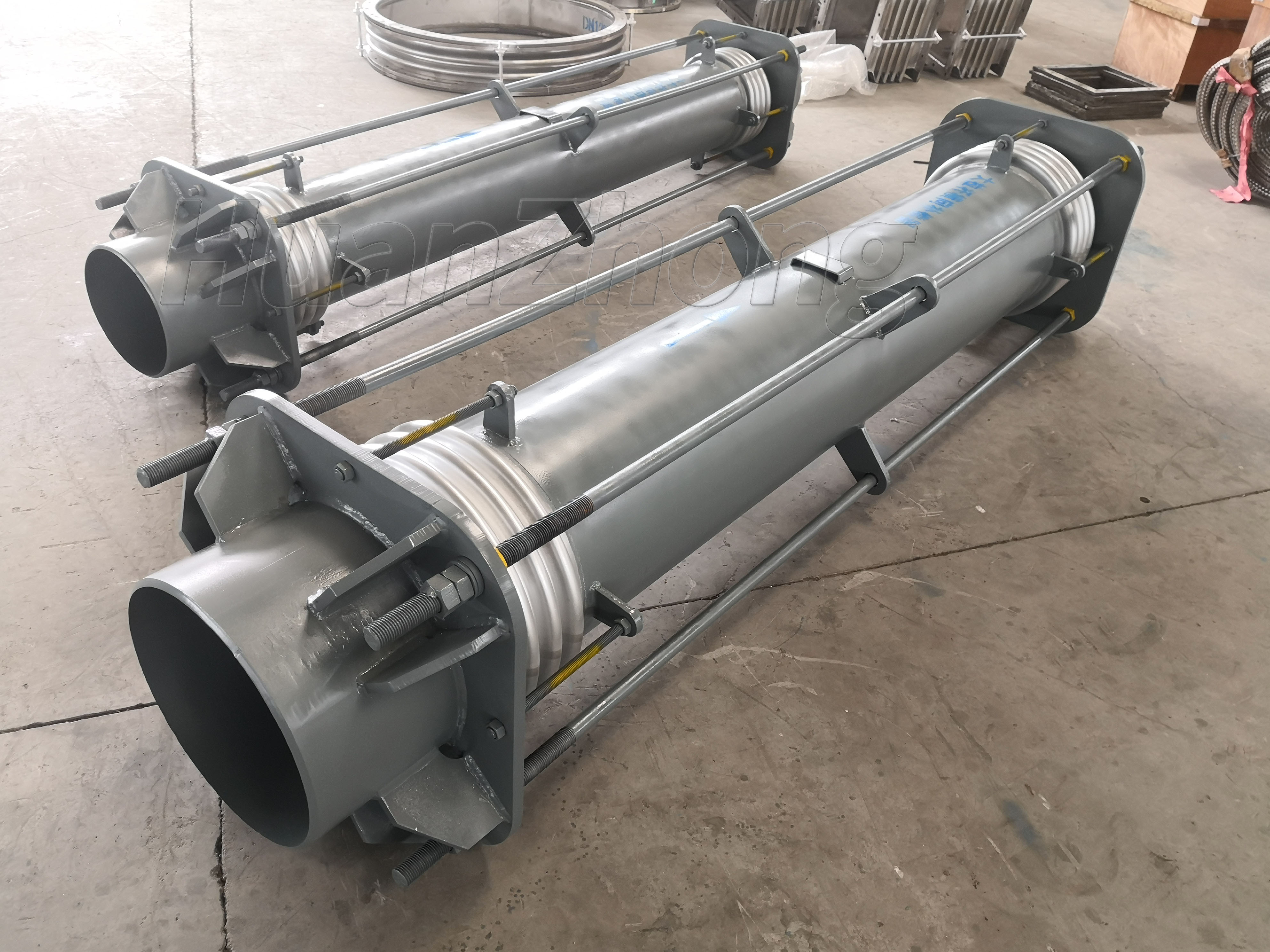Large rod bellows compensator installation specifications
The large rod bellows compensator, also called large tie rod compensation joint, compound test tie rod expansion joint, is one of the compensation components often used in pipelines. It is a flexural component composed of two identical bellows and end pipes, end plates and tie rods, which can absorb the lateral displacement of the pipeline in a single plane or multiple planes through the angular deflection of the bellows. Four long tie rods can withstand the role of internal pressure thrust and other additional external forces, the bolts at both ends of the tie rod factory has been adjusted before the spacing, the big tie rod is loose before installation, after the compensation joint work deformation, the big tie rod can play a role in limiting the amount of deformation to protect the bellows. The large rod bellows has the compensator compensation volume, no internal pressure thrust, small thrust on the bracket, safety and no leakage, low cost advantages.
Large tie rod bellows compensator in the installation of the need to pay attention to the following issues.
1. protection bellows made of multi-layer very thin stainless steel, is the main part of the big tie rod compensation joint, so in transportation, installation, welding should pay attention to prevent damage to the bellows parts.
2. Correct cold tight Cold tight installation can obtain greater compensation, but also can make the compensation joint in a good working condition, cold tight attention to the installation of the cold tight mouth can not be too close to the compensation joint, not allowed to rely on the compensation joint deformation to match the pipeline cold tight, to prevent the installation of misalignment, unevenness and other stresses acting on the bellows strains the compensation joint.
3. Not subject to torque At any time of installation and work, the body of the compensation joint should not be subject to torque, so as not to damage the bellows.
